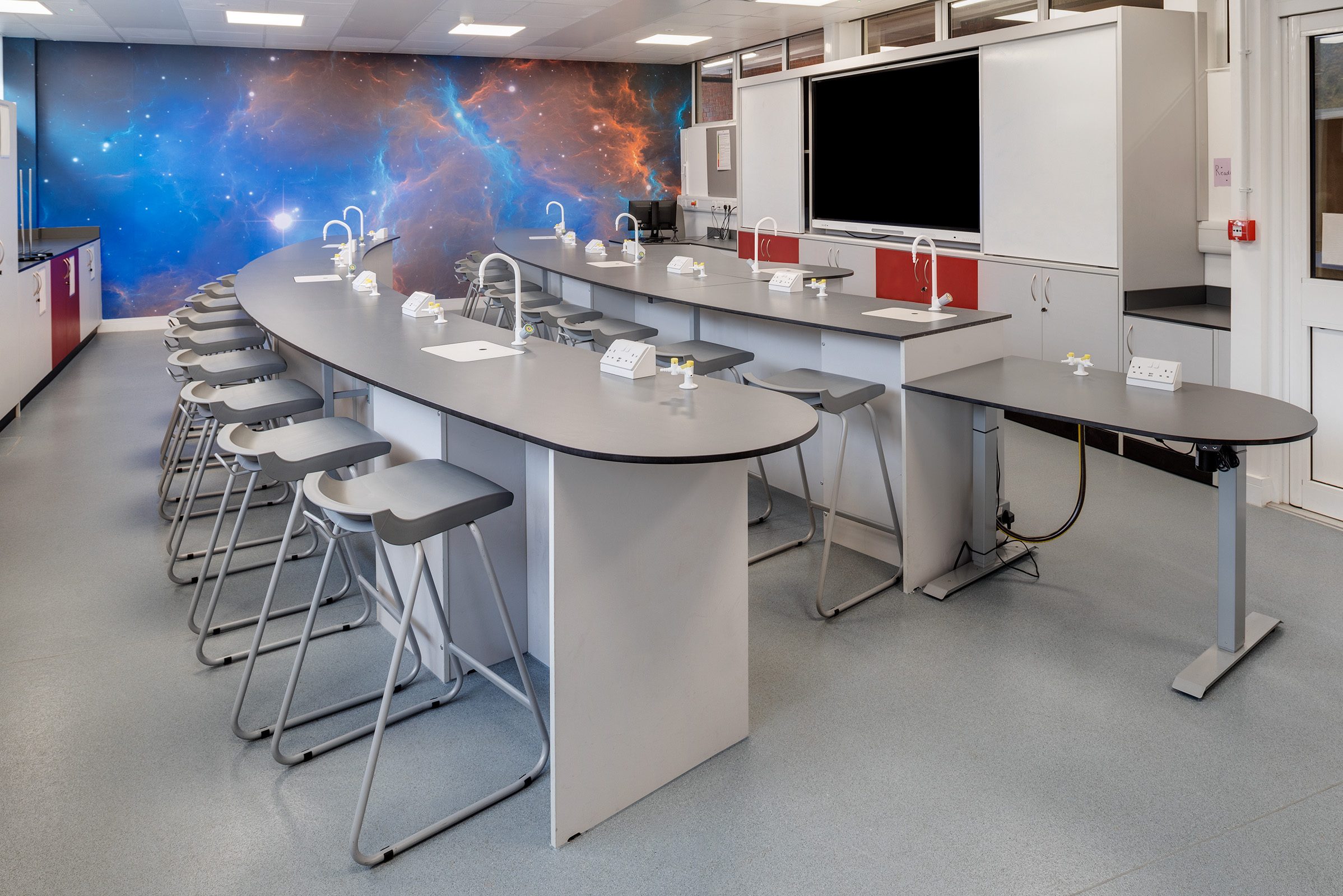What is a Teaching Wall and Why Your School Needs One
Mar 20, 2025 • 4 minutes

A teaching wall, also known as a media wall or learning wall, is a fixed storage and teaching unit installed at the front of the classroom. It is built around a central screen or interactive whiteboard and typically includes a combination of cupboards, open shelving, tray units and sliding panels.
As more and more schools install them in their classrooms, science labs, IT suites and food technology rooms, teaching walls are quickly setting the standard for how modern learning spaces are designed and used.
So, what makes them such a worthwhile addition?
A Better Storage Solution
In many classrooms, storage ends up wherever there is space. Trays might be stacked in a corner, a tall cupboard sits at the back and bookshelves line the walls. While this works to an extent, it often takes up more room than necessary. When you also need to fit in desks, chairs and space for thirty pupils to move around comfortably, every bit of floor space matters.
A teaching wall brings all of that storage together in one place along the wall. This can save up to 30% of your classroom floor space, giving you more freedom in how the room is laid out and used. It also makes everyday routines easier to manage. When everything is stored within reach, you can find exactly what you need without having to weave between tables.
Fewer Distractions
Classrooms are full of things competing for students’ attention. A half-open cupboard filled with supplies or a stack of worksheets from a previous lesson can pull their focus away from their work. With a teaching wall, these items are kept hidden behind closed doors or sliding panels until they are needed. With fewer things to look at around the edges of the room, it is easier for pupils to concentrate on what is happening at the front.
A Central Focus
Teaching walls give the classroom a clear sense of structure. With the whiteboard, screen and teaching aids all in one place, the front of the room becomes the natural point of focus. Pupils do not have to guess where to look or try to follow a lesson being delivered from the side of the room. Everyone gets the same view and the same chance to engage.
It also brings a sense of consistency. When the layout is the same from one classroom to the next, students know where to look, how the space works and what to expect during lessons. That small change can make a big difference to engagement and behaviour across the school day.
Built Around The Way You Teach
No two classrooms are the same. Some have awkward corners, beams, sloping ceilings or radiators to work around. Others need to accommodate specific teaching styles, age groups or subject requirements. What works well for a Year 1 classroom might not be practical in a science lab or IT suite.
Teaching walls can be planned around how the space is used, rather than forcing the room to adapt to the furniture. Whiteboards can be placed at heights suitable for younger pupils. Cupboards can be included or left out depending on how much storage is needed. Space can also be left for displays, hooks or bins.
In subject-specific classrooms, the layout can be adjusted to include features like lockable cupboards for equipment or access to power and data points. This flexibility means the teaching wall becomes a working part of the classroom, shaped by how teaching and learning actually happen in the room.
Upgrade Your Classroom with Westcountry Group
As local experts in educational interior design for schools across the South of England, we can help you create the perfect teaching wall for any classroom. With over 45 years of experience in designing educational spaces, we are dedicated to creating classrooms that inspire, engage and support students of all ages and abilities. Here is what teachers and staff had to say about our work.
Contact Westcountry Group today to discuss how our SmartSpace suit of products can help transform your classroom — call 0330 030 0330, email: sales@westcountrygroup.com or visit the teaching wall section of our website.






